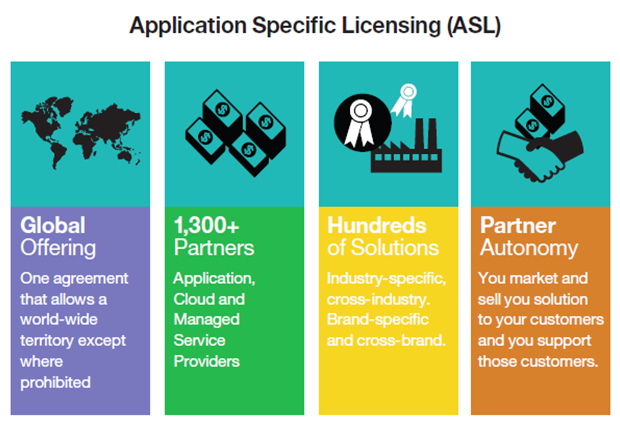The world has moved on since 1995 when IBM acquired Lotus Software, Windows 95 was released, the Shuttle docked with MIR, and Dreamworks introduced us all to Buzz and Woody for the first time. At a time when the deployment of applications and services via the cloud and hybrid infrastructures are becoming more common, relying on a vendor programme built in the 1990s doesn’t always make the best sense.
For an organisation interested in creating solutions, services or using IBM Software technology within their enterprise (and there are lots of partners, end users and a massively varied IBM software technology stack out there) the common assumption is that to purchase a “right to use” licence, you have to take that well trodden path through the IBM’s Passport Advantage (PA) scheme, with its numerous initiatives and often complex processes.
Leveraging IBM technology in a cloud deployment has often meant that as a partner you are adapting your go-to-market model and the commercial relationship with your end user to fit IBM’s PA programme.
Buying an asset such as perpetual licences, which is then restricted to a specific client can be a massive turn-off for an “X”aaS provider, even when the technology itself is the best out there. Since 2010, when IBM rebranded their “OEM-lite” licensing programme, there has been a flexible programme available to ISVs, MSPs and SIs by the name of Application Specific Licensing (ASL).
ASL is aimed at business partners who wish to take IBM’s software and build it into the repeatable solutions they take to market – historically an application “on-premise” but also with the ability to deploy that software via a cloud delivery model by putting the right to use firmly in the control of the partner and their offerings rather than the eventual end user.
Other features (more than it is possible to cover here) make ASL all the more appealing in the deployment of hosted solutions and SaaS, which are ideal for anyone building such things on SoftLayer:
- ASL is the only IBM licensing model available today that enables monthly licensing metrics to be created for IBM Software – allowing IBM to map their component costs to the ramp-up, ramp-down usage and commercial model of a true SaaS solution.
- ASL enables the partner to manage and redeploy licences throughout their user estate – subject to conditions, IBM components of a cloud solution can be reused when an end clients leave and new client joins a service.
- ASL routes support for the IBM component to the solution provider – the Partner is the interface for post-sales technical support, streamlining the end user experience and adding greater value to the solution being offered.
The ability for a partner to create a unique agreement means ASL gives an ISV or MSP not just a USP over their rivals, but the ability to leverage IBM technology in markets where they may previously have not been commercially viable. Restricting use to a service, using a monthly model means a client no longer has to take on a third-party asset and can easily consume a service from a provider building in IBM software, and do it across their multi-national sites with ease.
So what’s the catch? There are very few as long as you add significant value to the IBM component. Purchase commitments are a thing of the past. Solutions can be added to an ASL agreement and amended as they evolve, plus PA and ASL programmes can sit side by side but you can not mix and match within a solution deployment.
In short, partners really do have an option when building out PaaS, SaaS and BPaaS (CLARIFY acronym) offerings using IBM software, be that Sametime, WebSphere, Tivoli Endpoint Management, Rational, or any number of the recent acquisitions (such as Netezza, MaaS360, WorkLight or Cast Iron).
Off the back of strong growth in 2010 one thing is for sure in 2015, with the promise of new features such as “Percentage of Revenue” licensing models for certain software, ASL is relevant for those in the cloud space and will continue to attract new partners and clients who have previously dismissed IBM as too difficult to bring into their own terms, conditions and commercials in the past.
Business Unit Director - Tech Data Advanced Solutions




